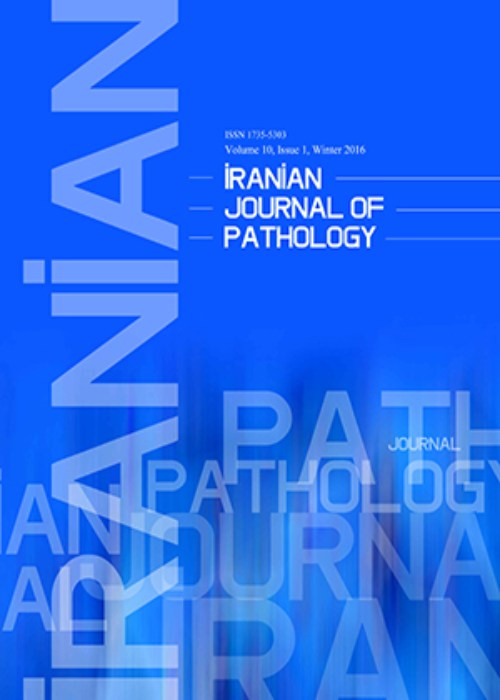Estrogen Receptor Beta Expression in Melanomas Versus Dysplastic Nevi
Author(s):
Article Type:
Research/Original Article (دارای رتبه معتبر)
Abstract:
Malignant melanoma is a tumor arising from melanocyte; this tumor rarely occurs before puberty, with higher mortality rate in males and better survival rate in female patients affected by metastatic melanoma (1, 2). These facts propose that a relationship and association may exist between estrogens and melanoma. The effects of estrogens are mediated by estrogen receptor alpha and beta (3) that are members of the nuclear hormone receptor family. Estrogen receptors act by ligand-dependent binding to the estrogen-response element, leading to transcriptional regulation of target genes (4). Although these receptors have a high degree of homology in the DNA-binding domain, they are different in their N-terminal and ligand-binding domain (E-domain) (5). Moreover; the effects of these two receptors are also different, while estrogen receptor alpha is associated with stimulation of growth. Estrogen receptor beta (ERbeta) is associated with suppression of stimulation or inhibition of cells from multiplying (2). A number of reports show either a decreased expression of ERbeta messenger RNA and ERbeta protein or an increased estrogen receptor alpha/beta mRNA ratio in tumor versus normal tissue in several cancers such as breast, ovary, colon, and prostate (6, 7). As the expression of ERbeta in melanocytic lesions is controversial and finding new diagnostic methods to differentiate between benign and malignant melanocytic lesions is essential, the current study was conducted using immunohistochemical staining to characterize the expression of ERbeta in dysplastic nevi and melanoma. The expression of ERbeta was investigated in 10 patients with melanoma (five male and five female) and 10 patients with dysplastic nevi (seven male and three female) at the Department of Dermatology, Shahid Beheshti University of Medical Science, Tehran, Iran. All cases underwent immunohistochemical analysis according to the method described by de Giorgi et al. (2, 8). Only one of the patients with melanoma had ERbeta expression of grade III and the other nine patients had grade I, but all the dysplastic nevi had grade III staining. Comparison of melanocytes staining levels in the two mentioned groups with the Mann-Whitney U-test revealed a significant difference between estrogen receptor beta staining samples (P-value=0.0002). Results of the current study suggested a probable role for estrogen receptors in melanoma; in addition, it proposed ERbeta as a valuable diagnostic marker to differentiate between benign and malignant melanocytic lesions; however, according to the relatively small number of patients, further comprehensive studies should be conducted to confirm the current study
Keywords:
Language:
Persian
Published:
Iranian Journal Of Pathology, Volume:13 Issue: 3, Summer 2018
Pages:
377 to 378
magiran.com/p1897200
دانلود و مطالعه متن این مقاله با یکی از روشهای زیر امکان پذیر است:
اشتراک شخصی
با عضویت و پرداخت آنلاین حق اشتراک یکساله به مبلغ 1,390,000ريال میتوانید 70 عنوان مطلب دانلود کنید!
اشتراک سازمانی
به کتابخانه دانشگاه یا محل کار خود پیشنهاد کنید تا اشتراک سازمانی این پایگاه را برای دسترسی نامحدود همه کاربران به متن مطالب تهیه نمایند!
توجه!
- حق عضویت دریافتی صرف حمایت از نشریات عضو و نگهداری، تکمیل و توسعه مگیران میشود.
- پرداخت حق اشتراک و دانلود مقالات اجازه بازنشر آن در سایر رسانههای چاپی و دیجیتال را به کاربر نمیدهد.
In order to view content subscription is required
Personal subscription
Subscribe magiran.com for 70 € euros via PayPal and download 70 articles during a year.
Organization subscription
Please contact us to subscribe your university or library for unlimited access!


